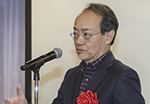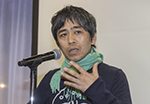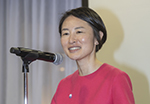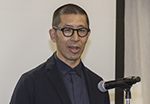Overall Evaluation
 |
Takayuki KishiiHaving been selected from among more than 200 entries, the ten award winners were a strong group, each one thought-provoking in its own way. The theme for this year’s competition is “Shibuya-style Public Space”. I was very interested in what the applicants would perceive as “Shibuya-style”. The entries displayed great conceptual breadth. Some of them want to change the Shibuya area itself, while others analyze the area for insights into what makes it “Shibuya-like”, and then apply those insights to public spaces in other cities. As someone involved with the development of Shibuya, I found many of the entries very instructive. For example, the approach that goes beyond public spaces managed by the government and beyond the surrounding buildings to argue that the character of public space is determined rather by the activities that take place there was illuminating, as well as Shibuya-related keywords such as “pre-established disharmony”, “subculture”, and “accumulation of small levels”. The participants in this competition will surely find occasions in their work to think about public space. I hope that they will put this experience to good use and come up with real-world solutions that surprise us all. |
 |
Ryue NishizawaThis year the important thing was to think about two questions – what is public space, and what kind of place is Shibuya? The First Place entry “People and Insects and Birds and Town” (Minako Okuma) went beyond the human-centric view to evoke a world where all things comes together. As a proposal suggesting new possibilities for public space, it was eminently deserving of First Place. Other proposals were wide ranging and interesting, raising the difficult question of what to set as judging standards. Overall, my impression was that many proposals were like special events. I felt that more could have focused on public spaces with a larger measure of universal value, like the River Seine in Paris or shrines in Japan. I think it is fine for individual places to be used in various ways, but also that it is necessary to think more deeply about the fundamental philosophy behind it. I look forward to that type of discourse next time, and I myself want to spend more time deepening my own thinking about public space. |
 |
Chiaki HayashiI looked forward very much to participating in this, my first architecture competition. I work as a future designer at Future Design Shibuya, and found the presentations to be interesting and instructive. For example, when thinking about how to interpret Shibuya, some approached it via iconic places such as the Shibuya Scramble Crossing, while others focused on the streetscape or interpreted Shibuya, like Tokyo or Shanghai, as a place where a diversity of people gather. There were proposals on many different scales, from a variety of perspectives. Shibuya is also a popular tourist destination, and I was struck by proposals that approached the area in that way, from a fresh overseas perspective. Regardless of the scale of the proposed space, the important thing is the question of what that person wants Shibuya to become. That question was expressed in the various ideas, which were like getting a glimpse into a whole way of life. As a jury member, I took them seriously. To me this competition revealed another way to enjoy Shibuya. |
 |
Sato NatsuoI work as a future designer at Future Design Shibuya, and intended to approach the ideas in the competition from a Shibuya viewpoint. Listening to the presentations, I realized that architecture exerts a boundless influence on the area where it is built, and felt that this opens up enormous possibilities. However, I also felt that more serious consideration could have been given to implementation of the ideas. My understanding is that architects are professionals who take concepts or philosophies and translate them into form. The resources of the Earth and any particular area are limited, and I think that architects have the responsibility to create something that will last 100 years. Some entries failed to go beyond the stage of ideas, which I felt was a lost opportunity. I would have liked to see more high-resolution entries exploring the the intersection of strong ideas and actual realization. Compared to the 20th century, when economic considerations were uppermost, I think that relationships with society are crucial for making things in the 21st century. My background is in marketing and branding, not architecture. However, for example, nonprofit organizations now think more than they did previously about their relations with society. I think we are living in an interesting time, when no holds are barred. In that context, I hope that the participants will believe more strongly than anyone else in the possibilities of architecture and continue working toward the realization of a great dream. |


